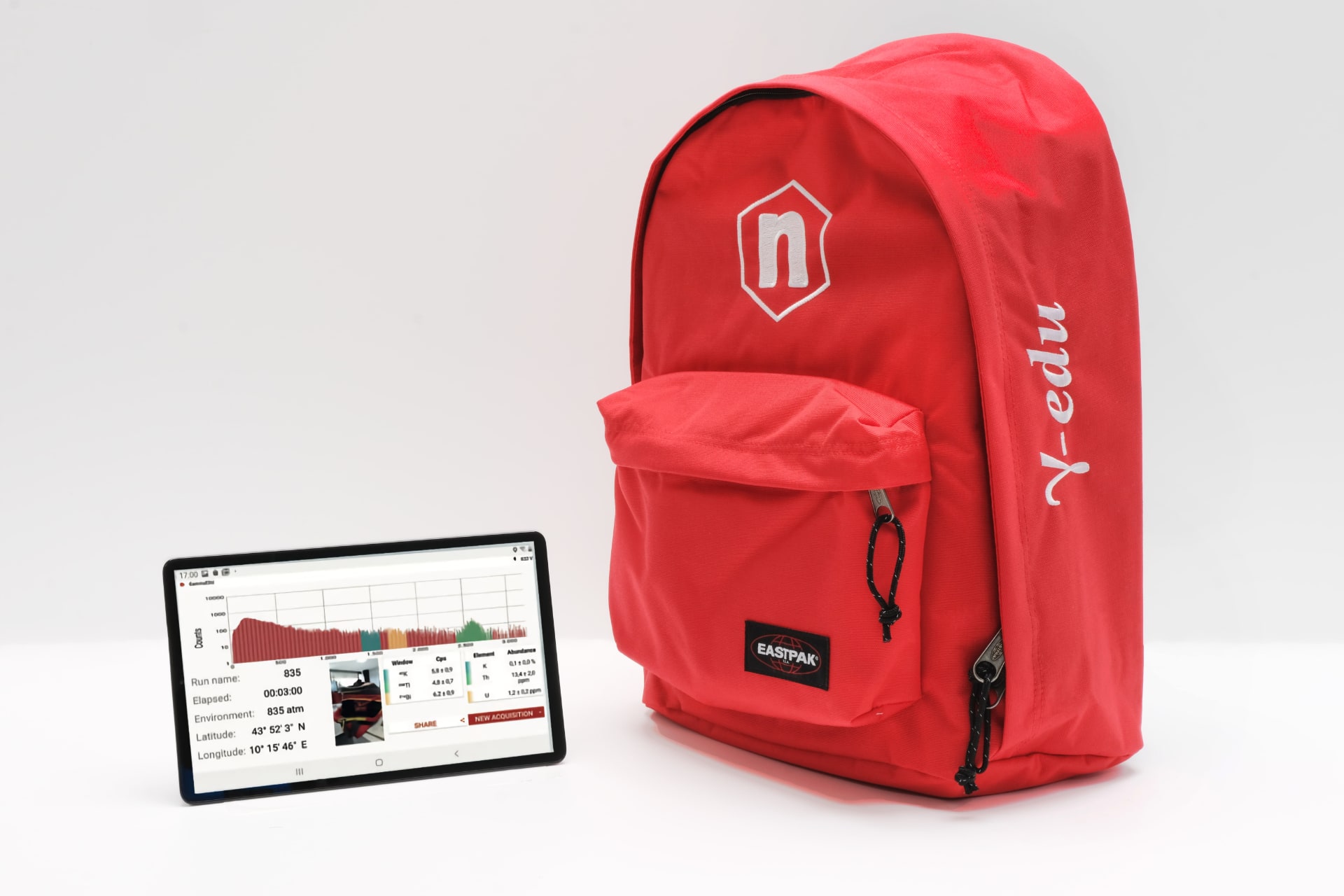| Difficult | Execution Time | Data Analysis | Radioactive Sources |
|---|---|---|---|
| No | No |
Hardware setup
This experiment guide is referred to the SP5640 educational kit.
Equipment: SP5640 – Backpack Detector
| Model | SP5640 |
|---|---|
| Description | Backpack Detector |
Purpose of the experiment
Increase of the familiarity with environmental radioactivity topic via measurements in field which combine nuclear engineering and computer science for a better comprehension of basic physics concepts.
Fundamentals
Radioactivity is a physical phenomenon occurring when an unstable nucleus undergoes a transition from one energy state to another. In addition to the cosmogenic radionuclides, natural sources include the so-called primordial radionuclides existing since the Earth formed and that have not completely decayed due to their long half-life (~109 years and longer). The most common isotopes in the Earth responsible for the so-called terrestrial radiation are Uranium (238U), Thorium (232Th), and Potassium (40K), together with their multiple daughter products. It is estimated that 80% of the average annual dose for the world’s population comes from natural background radiation. While 40K undergoes one single decay, 238U and 232Th produce decay chains that comprise α, β, and/or γ decays.
In the outside environment, especially in case of in-situ γ-ray spectroscopy, there are many variables that could interfere with the measurement, such as the presence of vegetation or buildings and the morphology of the area affecting the field of view of the spectrometer.
Requirements
No other tool is needed.
Carrying out the experiment

- Power on the γ-stream inside the red backpack.
- Power on the tablet and associate the two devices via Bluetooth.
- Take care that the γstream internal battery is charged, otherwise use the external power system.
- Start the measurement campaign in land field and place the backpack on the floor almost 1m far from the trees, manhole or other construction.
- Set the acquisition time to about 5 minutes and see the results. If the statistic is not enough increasing the acquisition time. It is good practice to repeat the measurement in order to obtain the mean and standard deviation of the result.
Results
The measurement results are compared to the reference values in the terrestrial crust. The discrepancy in the reference levels can be explained by the building material, distance from soil and more. This kind of measurement is important for the evaluation of natural radiation exposure from building materials [2013/59/ Euratom Directive and by UNSCEAR (United Nations Scientific Committee on the Effects of Atomic Radiation)].

Experimental result of in-situ γ-ray spectroscopy taken place in Viareggio, Italy.


